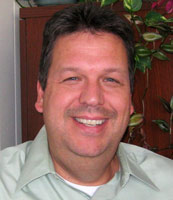Five Minutes With Audio & Video Home
fiveminuteswith
How Recycling System Reduced Water Use by 25 Million Gallons at the University of Alabama-Birmingham
Matt Winslett, the engineering manager, in the University of Alabama-Birmingham Facilities Division, discusses a water recycling system that reduced water use by 25 million gallons in a calendar year.

Matt Winslett
engineering manager
University of Alabama-Birmingham Facilities Division
1. Briefly describe how the water recycling system works, and how the school uses the water that's collected.
UAB has three centralized chilled water plants with machines capable of 38,000 tons of cooling. Serving 47 campus and hospital buildings we use a lot of water in our cooling towers during the evaporative and blow-down process.
As condensate water is gravity-drained from air handler chilled water coils, it is intercepted and collected in small basins positioned locally at each air handler. Each local basin has a small level-controlled sump-pump sized to transfer collected water to a larger 500-gallon collection tank. The 500-gallon collection tank contains level controls that pump high-pressure, filtered condensate into the chilled-water return-line before it leaves the building. This rise in pressure is sensed blocks away at the central plant and water is relieved from the chilled water return line into the cooling tower. This in turn reduces makeup water required during the evaporative cooling process. Note that if either the small basin sump pump, high pressure return pump, or central plant tower relief valve fails, the water exits down the drain in the building as it has for many years. The system works very well with ground water sources too.
2. Describe your role as a manager in the planning process and the implementation of the water recycling system.
My team and I came up with the idea. I oversaw the design and installation of the recovery sites.
3. What challenges did your staff face while installing the water recycling system?
Since our biggest fin water contributor is from laboratories, the introduction of unwanted biological containments was our biggest concern. Treating each site like a swimming pool with chlorine ran the risk of too much oxidation. The magic bullet was swapping over from a bromine loop/tower treatment to chlorine-dioxide. CLO2 will kill anything and is safe enough for drinking water systems. We achieved better water treatment as well as over $60,000 a year savings in chemical treatment costs.
4. How has your staff been impacted by the addition of the recycling system?
Each system requires minor maintenance. Filter swaps are common, especially early in the cooling season, and all the tanks are scrubbed at the end of the season. Each system can be locally manually bypassed with valves so the coils can be cleaned or centrally bypassed at the central utility plant if needed.
5. What kinds of savings have you experienced since the system’s installation?
With nine sites installed to date, we have saved over 25 million gallons and $100,000 this calendar year alone with about half attributed to ground water. With system costs $30,000-$50,000 depending on the size of the building and system type, condensate return systems offer an average three-year payback and so far the ground water systems are paying back in less than one year.
6. What are the next steps in your department’s plan to conserve energy, especially water?
Exploit more recovery sites. We are currently working on two more sites that were temporarily metered at over 1 million gallons a month.
posted: 12/2/2013








